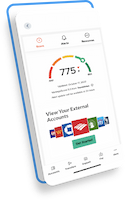Remember sitting in algebra class in high school, racking your brain over X’s and Y’s and something called “order of operations”…. and wondering when am I ever going to need to know this as an adult?
Welcome to adulthood, and guess what? You were right! You don’t need most of what you learned in high school math classes (unless you’re, you know, a mathematician or a scientist now). But that doesn’t mean you shouldn’t have learned math at all. They just should have taught you something more practical.
Here are some useful numbers you should have been learning in high school math instead of the Pythagorean theorem.
50/20/30: Where to allocate your income
To get the most out of the money you bring in, many experts recommend following the popular 50/20/30 rule to determine how to spend it. This rule takes the amount of money you make each month and allocates it like this:
- 50% toward “must-haves,” a.k.a. your fixed expenses like bills and housing.
- 20% toward savings and financial goals, including retirement savings and debt repayment.
- 30% toward “wants,” a.k.a. your fun money for short and medium-term spending.
This rule is a litmus test for your spending and income. If your must-haves are costing you far more than 50% of the money you bring in each month, what can you change to get in alignment? Do you need to earn more, move to lower-priced housing, or find a different internet or cell phone provider?
These categories also make tradeoffs clear. If you want to save more aggressively so you can retire early, will you pull from your wants or must-haves to make it happen?
20%: The amount to save from each paycheck
Saving any amount regularly will put you ahead of most Americans, but experts generally recommend setting aside about 20% of each paycheck if you can. This is in line with the 50/20/30 rule and helps ensure you allocate enough of your income toward financial goals on the regular to keep moving forward.
This 20% doesn’t all need to go into your retirement account, and it shouldn’t all go into a savings account. If you have outstanding high-interest debt, you might want to put some of it toward paying that down in addition to funneling some toward long- and short-term savings.
You might split that money up across accounts, including:
- 401(k), IRA or other retirement account.
- High-yield savings account.
- Other investment accounts.
- Credit card debt.
- Personal loans, auto loans and other consumer debt.
- Student loans.
- Extra mortgage payments.
3–6 months: The goal for your emergency fund
If you don’t already have money stashed away for a rainy day, that should be your first savings goal. An emergency fund should be separate from your everyday spending account but still accessible, so don’t count on illiquid assets like investments or a retirement account in case of a financial emergency.
Save an emergency fund in a liquid account that’ll let you earn interest on the balance, like a high-interest checking account or a money market account.
Financial experts love to debate the right amount for an emergency fund, but most land on an amount that covers around three to six months of your must-have costs. (Some suggest three to six months’ income, which would make it easier for you to maintain your lifestyle in case of income loss.) You might even prefer more, like nine or 12 months.
The goal of your emergency fund is to keep you afloat in case of a serious financial shakeup, like job loss or a medical emergency not covered by insurance. For more predictable irregular expenses, like home and car maintenance, holiday gifts and travel, use sinking funds.
The average savings account earns very little
Savings account interest rates can change often, but traditional accounts typically offer a low return on your money.
Now compare that to what you could earn with a high-yield savings account, like the one offered by Quontic. These accounts can often provide significantly higher returns than the national average, though rates are always subject to change, so be sure to check for the latest updates.
∞: The power of compound interest
The great thing about a high interest rate on your savings account isn’t just the difference in that one number. The real power happens when you combine regular savings with high interest and — the magic ingredient — time.
Compound interest is what we call the effect of earning interest on the interest you’ve already been paid. That happens when you have a savings balance in, say October, that gets paid interest, and you leave that interest earned in the account. Then in November, you get paid interest on your new balance, which includes that interest you earned in October. That’s basically the bank paying you for money they gave to you.
Don’t worry: You still don’t have to do any math. Through our compound interest calculator, you can see exactly how compounding interest will affect your savings balance over time.
1National Average APY information as of October 17, 2022, according to the FDIC National Rates and Rate Caps.
2High Yield Savings Account – $100 to open account. Rates may change without notice. If the account is closed before interest and/or bonus is credited, accrued interest and/or bonus may be forfeited for that statement cycle. Fees could reduce earnings. Ask for details. Additional terms, conditions, fees & exclusions may apply.
Quontic Bank cannot and does not guarantee the information applicability or accuracy regarding your individual circumstances. This is not financial advice, nor should it constitute or be construed as instruction for any individual reader, or group of readers, to act or make a decision in any financial capacity. Seeking independent, professional consultation from a qualified and licensed expert is always the optimum avenue in making financial decisions.
Information is as of November 21, 2023.





